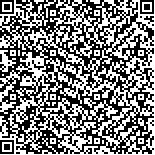本文已被:浏览 153次 下载 150次
Received:January 05, 2024 Published Online:May 20, 2024
Received:January 05, 2024 Published Online:May 20, 2024
中文摘要: 目的 应用三维有限元方法分析并比较横韧带损伤与否对寰枢椎复合骨折稳定的影响与应力传导情况。 方法 选择1名正常男性志愿者,采用64排螺旋CT机扫描枕颈部(C0~C3),利用Simpleware 3.0、Geomagic 12.0、Hypermesh 12.0等软件建立C0~C3节段三维有限元模型(FEM/Intact),并进行对比验证。在验证的模型基础上断裂C1前弓和后弓及切断齿状突基底部,模拟Jefferson/Ⅱ型齿状突骨折的复合骨折有限元模型(FEM/Fracture)。在此基础上分别建立两种模型:寰椎横韧带断裂模型(FEM/RTL)及寰椎横韧带无损模型(FEM/TL)。对三种模型加载前屈、后伸、侧屈、旋转工况,分析各模型在不同工况下Von Mises应力云图及各椎节活动度。 结果 本实验建立的寰枢椎复合体三维非线性有限元模型外观逼真,几何相似性好。模型各椎节的活动度与 Panjabi 发表的体外实验分析结果基本相吻合。而后建立的Jefferson/Ⅱ型齿状突骨折的复合骨折模型及其合并寰椎横韧带损伤和完整的模型外观逼真,几何相似性好。Jefferson/Ⅱ型齿状突骨折的复合骨折合并寰椎横韧带损伤后上颈椎的不稳主要集中在寰枢关节,在前屈、后伸、侧弯和轴向旋转等工况下的关节活动度均比正常组有不同程度的增大。 结论 寰椎横韧带损伤对寰枢椎复合骨折的稳定性与应力传导有明显影响。本文建立的有限元模型可以用于Jefferson/Ⅱ型齿状突骨折合并横韧带损伤的生物力学分析,还可为寰枢椎复合骨折上颈椎固定方式的选择提供有力的理论支持。
Abstract:Objective To analyze and compare the effects of transverse ligament injury on the stability and stress distribution of atlantoaxial complex fractures using 3D finite element method. Methods A male volunteer with a normal cervical spine was selected. The cranio-cervical region (C0-C3) was scanned using a 64-slice spiral CT scanner. Software such as Simpleware 3.0, Geomagic 12.0, and Hypermesh 12.0 were used to create a three-dimensional finite element model (FEM/Intact) of the C0-C3 segment. On the validated model, the anterior and posterior arches of C1 and the base of the odontoid process were fractured to create a composite fracture model (FEM/Fracture) simulating Jefferson/Type Ⅱ odontoid fracture. Two additional models were created: one with a ruptured transverse ligament of the atlas (FEM/RTL) and another with an intact transverse ligament (FEM/TL). The models were subjected to loading conditions of flexion, extension, lateral bending, and rotation, and the Von Mises stress distribution and vertebral segment motion were analyzed for each model under different loading conditions. Results The three-dimensional nonlinear finite element model of the atlantoaxial complex created in this study had a realistic appearance and good geometric similarity. The motion of each vertebral segment in the model was consistent with the results of Panjabi's in vitro experimental analysis. The composite fracture model of Jefferson/Type Ⅱ odontoid fracture with or without transverse ligament injury also had a realistic appearance and good geometric similarity. After combining the transverse ligament injury with the Jefferson/Type Ⅱ odontoid fracture, the instability of the upper cervical spine primarily concentrated at the atlantoaxial joint, with varying degrees of increased motion in flexion, extension, lateral bending, and axial rotation compared to the normal group.Conclusion Transverse ligament injury significantly affects the stability and stress distribution of atlantoaxial complex fractures. The finite element models established in this study can be used for biomechanical analysis of Jefferson/Type Ⅱ odontoid fracture combined with transverse ligament injury, and provide strong theoretical support for the selection of fixation methods in atlantoaxial complex fractures.
文章编号: 中图分类号:R683.2 文献标志码:A
基金项目:上海交通大学医学院附属松江医院院级课题(2023YJB-5)
| Author Name | Affiliation |
| HUANG Kai, LIU Chao | Department of Orthopedics, Songjiang Hospital Affiliated to Shanghai Jiao Tong University School of Medicine, Shanghai 201699, China |
| Author Name | Affiliation |
| HUANG Kai, LIU Chao | Department of Orthopedics, Songjiang Hospital Affiliated to Shanghai Jiao Tong University School of Medicine, Shanghai 201699, China |
引用文本:
